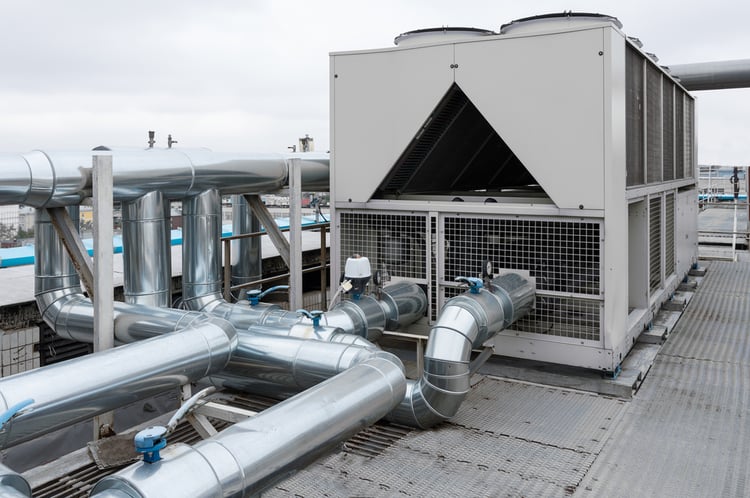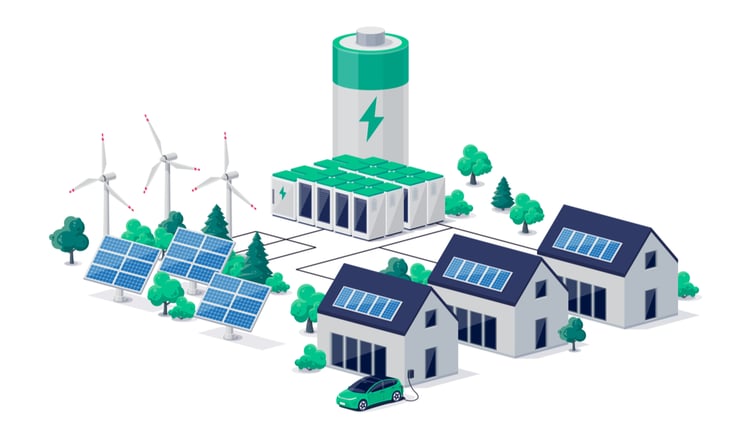How Energy Efficiency and Demand Response Help the Grid During Summer

Operating a modern power grid is a technical challenge. The grid must have enough generation capacity to meet the highest demand that can be expected, and this value increases each year due to population growth. However, generation is not enough to ensure a stable power supply: utility companies must constantly upgrade their transmission and distribution capacity, ensuring that electricity can reach the point of use.
Summer is the most challenging time of the year for power companies, since electricity consumption increases sharply due to air conditioning. The grid must be ready to provide electricity for millions of AC systems operating in homes and businesses, and the load tends to increase each year. The grid must also be prepared for summers with above-average temperatures, and 2022 is expected to be among the 10 warmest years on record.
Cut your power and gas bills with a professional energy audit and a building retrofit.
While utility companies are responsible for upgrading and servicing their grids, the building sector can also contribute to a stable power supply. Energy efficiency measures can reduce their consumption individually, and the combined effect reduces the total burden on the grid. Demand response measures have the specific goal of reducing energy consumption in buildings when grid demand is high, and multiple buildings can remove several megawatts of load.
Energy efficiency and demand response benefit both building owners and power companies. With energy efficiency measures, buildings can achieve a permanent reduction of their gas and electricity bills. Demand response lowers the peak consumption measured by power meters, reducing capacity charges.
Energy Efficiency Measures for Summer

Air conditioning is the largest electrical load during summer, but this also creates an opportunity for measures that improve cooling efficiency. There are three main ways to reduce the electricity consumption of air conditioning systems:
- Improve the building envelope to reduce heat gain from outdoors.
- Upgrade air conditioning systems with newer and more efficient units.
- Reduce consumption further with automatic controls: Smart thermostats, variable frequency drives, building automation systems, etc.
By combining these measures, a building can greatly reduce its air conditioning costs. However, an energy audit is strongly recommended as a starting point, to identify the specific measures that will achieve the highest savings. Energy efficiency requires a customized solution for each building, since property conditions and energy consumption patterns vary.
Building envelope upgrades range from simple measures like caulking and weatherstripping, to more complex projects like complete window replacements and wall insulation upgrades. When a building has a high R-value and an airtight envelope, energy is saved all year long. Both air conditioning and space heating systems operate more efficiently, since heat exchange between the interior and exterior is minimized.
High-efficiency air conditioning systems can achieve major savings during summer. Generally, the most efficient options for building owners are variable refrigerant flow (VRF) systems and modern chillers with variable speed compressors. When a building is divided into apartments or commercial spaces that need unitary air conditioners, you can save by using mini-split systems with a high SEER value (Seasonal Energy Efficiency Ratio).
Smart controls can enhance the savings achieved by an efficient air conditioner. Temperature settings can be adjusted to optimize consumption and comfort, and the speed of chilled water pumps and air handling unit fans can be reduced during part-load conditions.
A significant load reduction can be achieved by implementing these measures in multiple buildings. For example, if 20 office buildings can reduce the peak consumption of their air conditioning systems by 50 kilowatts each, the grid demand has been effectively reduced by one megawatt (1,000 kW).
Benefits of Demand Response Measures

Demand response measures have a specific goal: Reducing the power consumption of buildings when the grid is dealing with high load.
- Power companies often have demand response programs, when building owners get a financial incentive for reducing their consumption at times of high demand.
- Even without this incentive, buildings can use demand response measures to reduce their individual consumption peaks, and this is reflected as a lower capacity charge on the monthly power bill.
Keep in mind that most commercial and industrial consumers are not only billed for energy (kWh used), but also for peak demand (maximum kW during the billing period).
There are many types of demand response measures, and this gives building owners an opportunity to be innovative. A simple way to reduce consumption peaks is by changing the operating schedule of equipment. Non-critical loads that normally operate during peak demand can be used at other times of the day, and this will result in a peak demand reduction.
Demand response can also be accomplished with more complex measures. For example, building owners can use battery systems charged by onsite solar power, and use their output to reduce the net demand measured by the power meter. Large facilities with chiller plants can also implement ice storage systems, which can be used for cooling at times of peak demand, while the chillers are ramped down. These are just some examples of how buildings can reduce peak demand.

Michael Tobias
Michael Tobias, the Founding Principal of NY Engineers, currently leads a team of 150+ MEP/FP engineers and has led over 4,000 projects in the US
Join 15,000+ Fellow Architects and Contractors
Get expert engineering tips straight to your inbox. Subscribe to the NY Engineers Blog below.

